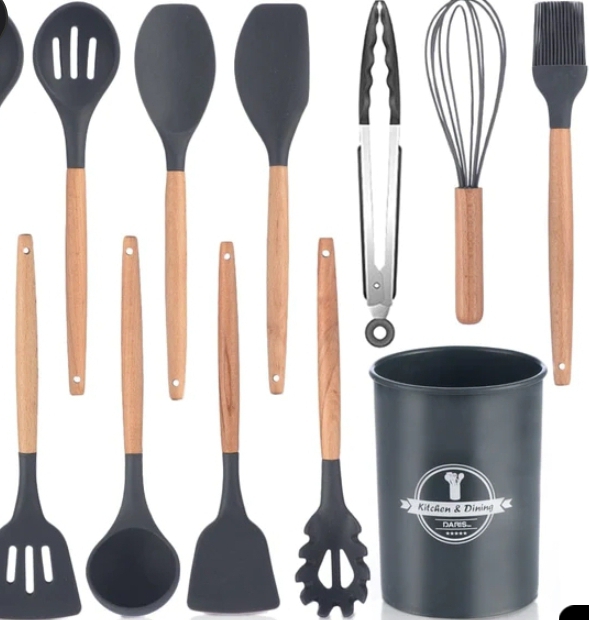Silicone Cooking Tools: A Versatile Kitchen CompanionSilicone cooking tools have rapidly become essential items in modern kitchens, revolutionizing the way we prepare and cook our favorite dishes. This versatile material, derived from silicon, oxygen, carbon, and hydrogen, boasts a range of properties that make it ideal for kitchen applications. From spatulas to baking mats, silicone tools offer numerous advantages that have elevated them to must-have status for home cooks and professional chefs alike.
One of the standout features of silicone cooking tools is their durability. Unlike traditional kitchen utensils made of wood or metal, silicone resists wear and tear, making it a long-lasting choice for busy kitchens. The material is also resistant to high temperatures, making it suitable for use in ovens and on stovetops. This resilience not only extends the lifespan of the tools but also ensures that they maintain their integrity even under intense heat.
Silicone’s non-stick properties are another major draw for cooks. Many silicone utensils and bakeware are designed to be non-stick, allowing for easy food release and hassle-free cleaning. This feature not only simplifies the cooking process but also promotes healthier cooking, as it reduces the need for excessive amounts of oils and fats. Silicone spatulas, for example, effortlessly glide through batter and mixtures, ensuring that no precious ingredients are left clinging to the utensil.
Versatility is a key strength of silicone cooking tools. From baking mats and oven mitts to spatulas and kitchen tongs, the range of silicone kitchenware is extensive. Silicone’s flexibility allows for the creation of tools in various shapes and sizes, catering to the diverse needs of cooks. Whether you’re flipping pancakes, stirring a delicate sauce, or baking cookies, there’s likely a silicone tool designed to make your task easier and more efficient.
In addition to being versatile, silicone is also a safe material for cooking. It is free from harmful chemicals like BPA and phthalates, ensuring that your food remains uncontaminated during preparation. Silicone’s inert nature means that it does not leach into food, providing peace of mind for health-conscious cooks. This safety factor has contributed to the widespread adoption of silicone cooking tools in both household kitchens and professional culinary environments.
The heat-resistant nature of silicone expands its use beyond traditional utensils. Silicone baking mats have become a staple for many bakers, offering a reusable and non-stick surface for cookies, pastries, and more. These mats eliminate the need for parchment paper or greasing, reducing waste and promoting eco-friendly kitchen practices. The ability to withstand high temperatures without warping or releasing harmful fumes makes silicone a reliable choice for bakeware, ensuring consistent results with each use.
Cleaning silicone cooking tools is a breeze, further enhancing their appeal. Most silicone utensils are dishwasher-safe, saving time and effort in the kitchen cleanup process. The non-porous nature of silicone prevents the absorption of odors or flavors, maintaining the integrity of the tools over time. This ease of maintenance adds to the overall convenience of using silicone kitchenware, making it an attractive option for those with busy lifestyles.While silicone cooking tools offer numerous benefits, it’s essential to use them properly to maximize their effectiveness and longevity.
Avoid exposing silicone utensils to open flames, as excessive heat can cause damage. Additionally, while silicone is durable, it’s not completely indestructible, so using sharp objects on silicone surfaces should be avoided to prevent cuts or punctures.
In conclusion, silicone cooking tools have become indispensable in modern kitchens, thanks to their durability, non-stick properties, versatility, safety, and ease of cleaning.

